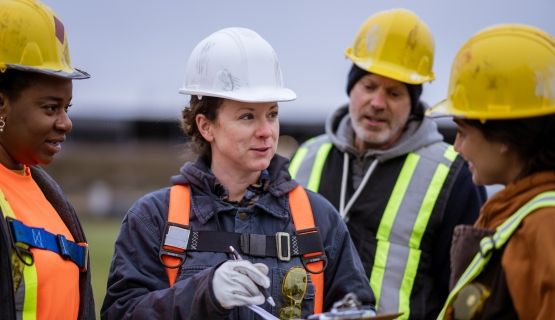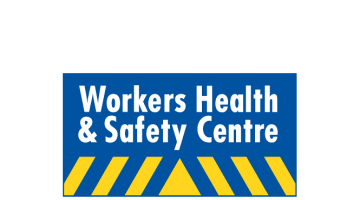Illness/injury prevention
IWH has a long history of conducting research to provide practical guidance to employers, workers, OHS professionals and regulators about what works and what doesn’t in injury or illness prevention. This research targets the injury and illness prevention practices of workplaces, as well as the programs developed by governments, health and safety associations and others to support and motivate workplaces to adopt effective practices.
Featured

At Work article
Differences in firm-level AI use for health and safety
To what extent are Canadian workplaces using artificial intelligence (AI) to help support workers’ health and safety? And what do these workplaces have in common? An IWH study surveyed firms across Ontario and British Columbia to find out.
Published: October 8, 2025

Impact case study
Saskatchewan’s construction safety group uses IWH tool to improve safety culture
This case study details how the Saskatchewan Construction Safety Association (SCSA) members have been analyzing IWH-OPM scores to adjust their safety practices and how SCSA has been using the data to tailor their outreach.
Published: February 10, 2025
Journal article
Journal article
Commentary: methodological approaches to understanding mechanisms and 'what if' questions in occupational health research
Published: Occupational and Environmental Medicine, August 2023
News release
News release
Only cannabis use at or before work linked with higher work injury risks
Published: July 2023
Journal article
Journal article
Artificial intelligence and the work-health interface: a research agenda for a technologically transforming world of work
Published: American Journal of Industrial Medicine, July 2023

At Work article
IWH tool comes out ahead in Australian study of OHS leading indicator tools
In an Australian study of five health and safety leading indicator tools around the world, a measure developed by IWH has come out ahead for its ability to pick up workers’ risk of reporting a physical injury or a near miss at work.
Published: February 2023

IWH in the media
Employers struggle to provide newcomers with OHS training, support: IWH study
A reprint of this IWH At Work article was included the February 2023 issue of the OCA's Construction Comment magazine.
Published: Construction Comment: Ottawa Construction Association, February 2023

IWH in the media
Standardized working at heights training improves safety, study
A follow-up study looking at the impact of Ontario’s mandated working at heights training confirms standardized training results in safer work.
Published: Workers Health & Safety Centre, January 2023

IWH in the media
Report urges worker safety while respecting cultural differences
Growing numbers of immigrants are welcomed as an important tool in Canada's economic growth, but systemic OHS improvements are needed to ensure they can work as safely as their non-immigrant co-workers, Don Wall reports on an IWH study.
Published: Daily Commercial News, January 2023
Project
Project
Creating safe workplaces for newcomers
An IWH qualitative study is looking at feasible and effective approaches for helping employers create safe workplaces for newcomers.
Status: Ongoing
Project
Project
Programs of early OHS intervention with small businesses
What existing OHS interventions for small businesses can be feasibly implemented in small business start-ups? This project aims to find out.
Status: Ongoing
IWH Speaker Series
IWH Speaker Series
Preventing falls from heights in construction: a long-term evaluation of Ontario's working-at-heights training standard
In 2015, the province of Ontario implemented a working-at-heights (WAH) training standard requiring most construction workers to take a specific day-long training in fall prevention. A 2019 study conducted by the Institute for Work & Health found the training had positive impact on construction workers' safety knowledge, work practices and injury rates. In this presentation, Dr. Lynda Robson shares new findings on the longer-term impact of the training, drawing on two additional years of follow-up data.
Published: December 2022